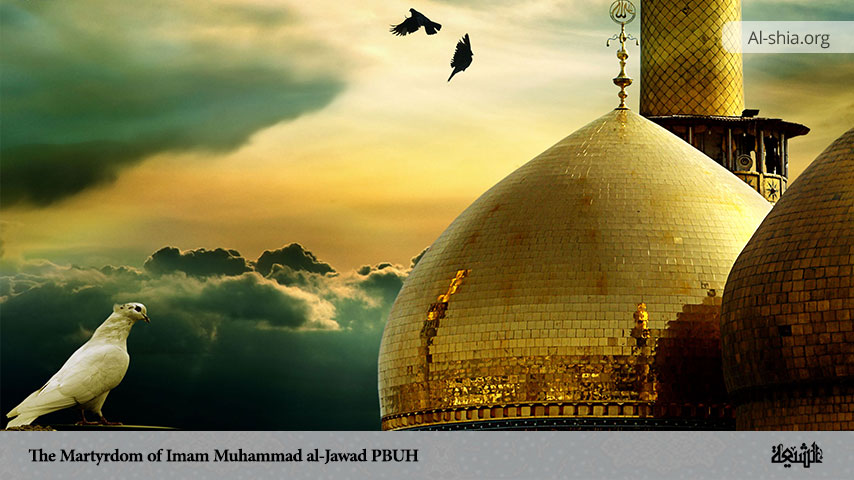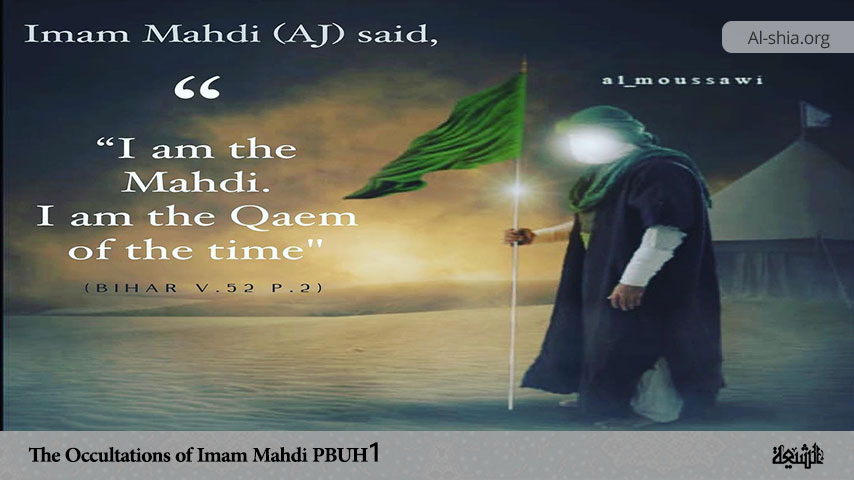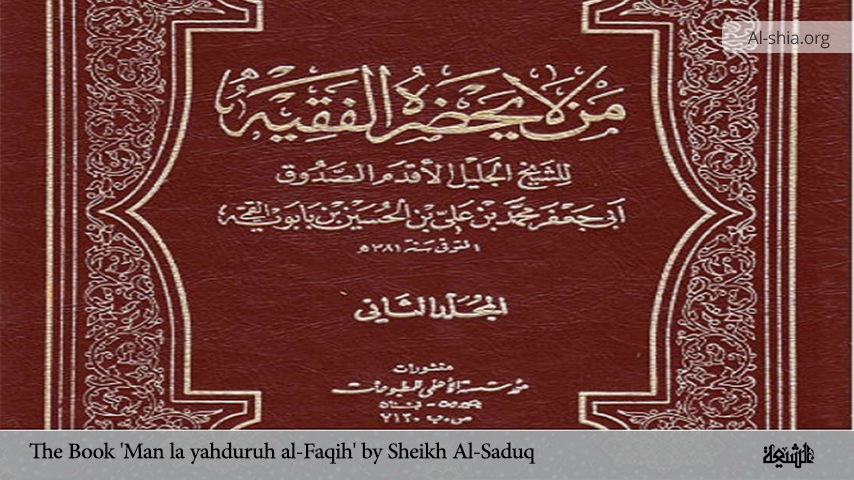Muhammad ibn Ali popularly known as Imam Muhammad al-Jawad (peace be upon him) is one of the members of the Prophet’s Household (Ahl al-Bayt) whom Allah has thoroughly purified from all filths[1]. He was the ninth Imam whom Allah enjoined the Muslims to love and obey[2]. Imam Muhammad al-Jawad is revered by Shia Muslims for his piety, generosity, and knowledge. His shrine is located in the Kadhimayn area of Baghdad, Iraq, where he is buried alongside his grandfather, Imam Musa al-Kadhim, the seventh Imam. The site is a significant place of pilgrimage for Shia Muslims.
His Lineage, Teknonym, and Titles
The father of Imam Jawād is Imam Ali ibn Kāzim al-Riḍa (PBUH) who was the eighth Imam from the Prophet’s Household[3]. His mother was Sabika from the family of Mariya al-Qibtiyya (one of the wives of the Holy Prophet). Meanwhile, the name of his mother in some sources is mentioned as Khayzuran, Nawbiyya and Rayhana[4].
His teknonym was Abu Ja’far but it is mentioned in historical narrations as Abu Ja’far al-Thāni so that he is not mistaken for Abu Ja’far al-Awwal who is Imam al-Bāqir (PBUH). His most famous title was al-Jawad and they have mentioned other titles for him such as al-Taqi (The pious), al-Murtada, al-Qani’, al-Radi, al-Mukhtar, al-Mutawakkil, and al-Muntajab[5].
His Birth
According to several historical reports, Imam al-Jawād (PBUH) was born in 195/811 in Medina. However, there is a difference of opinion among historians on the day and month of his birth[6]. Some have considered the birthday of Imam Jawād to be Ramadan 15/June 11[7], and some others regarded it as Ramadan 19/June 15[8]. The famous and unique report mentioned by al-Shaykh al-Tusi in Misbah al-Mutahajjid is Rajab 10/April 8[9].
It is pertinent to mention that the birth of Imam al-Jawād (PBUH) was considered a special blessing. Since Imam Riḍa did not have a child earlier in his life, some enemies spread the rumour that he is not going to leave any lineage and that the chain of imamate will be terminated after him. Because of this, when Imam al-Jawād -based on some narrative sources- was born in the last years of Imam al- Riḍa’s life and he brought him, he (PBUH) said thus: “This is a child, more blessed than him is not born for our followers[10].” In addition, there is another report narrated by Ibn Asbat and ‘Ubbad ibn Isma’il which said: “We were in the presence of Imam al-Riḍa (PBUH) when they brought Imam al- Jawād. We asked: ‘Is this that blessed child?’ Imam al-Riḍa (PBUH) replied thus: ‘This is the child, no more blessed than him is ever born[11].”
Imam al-Jawād (PBUH) was brought up by his purified father, Imam Riḍa (PBUH) for four years before he was forced to migrate from Medina to Khurasan (Iran) while leaving his young son behind.
His Imamate
According to Shi’a belief, leadership (imamate) is based on divine appointment. Thus, an Imam will only be appointed either through a Prophet (such the case of Imam Ali and the Holy Prophet) or a prior Imam. In light of this, Imam al- Riḍa (PBUH) declared the imamate of his son, Muhammad ibn Ali (PBUH) for his companions in several cases. For instance, in all the books such as al-Kafi[12], al-Irshad[13], I’lam al-wara[14], and Bihar al-Anwar[15], there is a chapter about the proofs for the imamate of Muhammad ibn Ali which have mentioned fourteen, eleven, nine, and twenty-six hadiths respectively.
When Imam al- Riḍa was to leave Medina for Khurasan, he was fully aware of the treacherous character of the ruling caliph and was sure that he would not return to Medina any more. Thus, he has declared his son Muhammad al-Jawād (PBUH) as his successor and imparted to him all his stores of divine knowledge and spiritual genius before he departed Medina.
There are many proofs to substantiate the imamate of Imam al-Jawād (PBUH) immediately after his father. There is a report in which one of the companions of Imam al-Riḍa asked him about his successor, and he pointed with his hand towards his son, Abu Ja’far (Imam al- Jawād) who was standing in front of him[16].
In 203/818, Imam al- Riḍa (PBUH) was martyred when his son, Imam al- Jawād was only 8 years old. Based on the divine appointment, Imam al- Jawād became Imam and this caused disagreement among Shi’a to the extent that some of them followed ‘Abd Allah ibn Musa ibn Ja’far, brother of Imam al-Rida. However, when they discovered he could not answer some of the questions posed to him, they abandoned him.
On the contrary, the majority of the companions of Imam al- Riḍa believed in the imamate of Imam al-Jawād. There are several reports about Shi’a’s questions and answers of Imam al-Jawād in hadith sources. His answers despite his tender age promoted his position in the eyes of Shi’a and their acceptance of his imamate.
The Imamate of Imam al- Jawād lasted 17 years from 203/818 until 220/835. After the martyrdom of Imam al-Jawād, his son, Imam ‘Ali ibn Muhammad al-Hadi took the responsibility of imamate.
His wives and children
Imam al-Jawād (PBUH) married Umm al-Fadl (al-Ma’mun’s daughter) in 202/817-8. Some historical sources mentioned that during the visitation of Imam Jawād of his father in Khorasan, al-Ma’mun asked him to marry his daughter. Al-Shaykh al-Mufid considered the marriage to be due to al-Ma’mun’s love for Imam al- Jawād[17]. Some other researchers believe that this marriage had political motives, including that al-Ma’mun wanted to control Imam al-Jawad and his relations with Shi’a through that marriage[18].
The other wife of Imam al- Jawād was Samana al-Maghribiyya, whom all the children of Imam al-Jawād were from her. According to Shaykh al-Mufid, Imam al- Jawād (PBUH) had four children with the names, ‘Ali, Musa, Fatima and Amama[19]. However, some sources mentioned three daughters for him with the names of Hakima, Khadija, and Umm Kulthum[20].
His Moral conducts
Based on reliable historical reports, Imam al- Jawād was unique in terms of knowledge, forbearance, eloquence, devotion and other moral virtues despite his being underage. He had a wonderful aptitude for answering scientific questions on the spot. Like his purified ancestors, Imam al- Jawād paid special attention to physical appearance and cleanliness. It is said that the title of “al- Jawād” (i.e., the generous) was given to Imam (PBUH) due to his great generosity and the act of benevolence to people. In addition, he was considered the most ascetic and purest of the people of his time. Similarly, Imam Jawād played a very crucial role and shared in enriching the scholarly school during the period of his leadership. Sheikh Tusi in his book ‘Rijal’, mentioned the number of the close companions of Imam al- Jawād and his narrators, who studied and were educated under his care to be about one hundred, including two women. Books of history have recorded the correspondences of Imam al- Jawād with his deputies who were spread in different parts of the Muslim world to convey the Islamic faith and what they learned from the jurisprudence of the Household of the Holy Prophet (PBUHH) and their knowledge.
His Martyrdom
After the martyrdom of Imam al-Riḍa (PBUH), the Abbasid ruler Ma’mun relocated the headquarters of his government to Baghdad, Iraq. Consequently, Mu’tasim ascended the throne and became the caliph after the death of Ma’mun in 203/818. He -just like his ancestors- was worried about the leadership and influences of the Prophet’s Household (Ahlul-Bayt) and their political and scholarly status. Therefore, he exiled Imam al-Jawād from Medina to Baghdad in the year 219 A.H., for fear of his popularity and extending his effect. He did this, to draw the Holy Imam near the centre of power and scrutiny and isolate him from practising his popular, political and scholarly role.
Imam al-Jawād (PBUH) was in Baghdad until the year 220 A.H. when he was martyred by poisoning by his wife Ummul Fadl at the instigation of the ruling Abbasid caliph Mu’tasim. Thus, the pure Imam (PBUH) was martyred at the tender age of twenty-five years and some months in Baghdad on the Dhul al-Qa’dah 29, year 220 A.H[21] and was buried in the graveyard of Quraysh behind his grandfather, Imam Musa ibn Ja’far al-Kāẓim (PBUH); the seventh holy Imam and the place was since then became famous as Kāẓimayn[22].
From that day until date, twenty-nine of Dhul al-Qa’dah is marked every year by the Shia worldwide for his remembrance. On this sad and grievous occasion, we extend our heartfelt condolences to all the followers and lovers of the Holy Ahl al-Bayt (peace be upon them) throughout the world. May the peace and blessings of Allah be upon the noble souls of Prophet Muhammad and the pure Household.
Conclusion
The martyrdom of Imam Muhammad ibn Ali Al-Jawad serves as a poignant reminder of the challenges faced by the Shia Imams in their commitment to spiritual and moral leadership. Despite his youth, Imam Muhammad al-Jawad exemplified wisdom, generosity, and unwavering faith, becoming a beacon of inspiration for Shia Muslims. Today, his legacy endures, revered through pilgrimage and remembrance, symbolizing the enduring struggle for justice and righteousness within the Shia tradition.
References
[1] . cf. Qur’an 33: 33.
[2] . cf. Qur’an 24: 43.
[3] . Ṭabarī, Muḥammad ibn Jarīr, Tārīkh al-Ṭabarī. Dalāʾil al-imāma, p. 396.
[4] . Kulaynī, Muḥammad ibn Yaʿqūb, al-Kāfī, vol. 1, p. 315, 492; Majlisī, Muḥammad Bāqir, Biḥār al-anwār, vol. 50, p. 1; Ibn Shahrāshūb, Muḥammad ibn ʿAlī, Manāqib Āl Abī Ṭālib, vol. 4, p. 379.
[5] . Ibn Shahrāshūb, Muḥammad ibn ʿAlī, Manāqib Āl Abī Ṭālib, vol. 4, p. 379; Majlisī, Muḥammad Bāqir, Biḥār al-Anwār, vol. 50, p. 12, 13.
[6] . Ṭabrisī, Faḍl ibn al-Ḥasan, Iʿlām al-warā bi-aʿlām al-hudā, vol. 2, p. 91; Ibn Shahrāshūb, Muḥammad ibn ʿAlī, Manāqib Āl Abī Ṭālib, vol. 4, p. 379.
[7] . Ashʿarī, Saʿd ibn ʿAbd Allāh, Kitāb al-maqālāt wa al-firaq, p. 99; Ṭabarī, Muḥammad ibn Jarīr, Dalāʾil al-Imāma, p. 201.
[8] . ibid, p. 99.
[9] . Ṭūsī, Muḥammad ibn al-Ḥasan, Misbāḥ al-Mutahajjid, p. 805.
[10] . Majlisī, Muḥammad Bāqir, Biḥār al-Anwār, vol. 50, p. 20, 23, 35.
[11] . ibid, vol. 50, p. 20, 23, 35.
[12] . cf. Kulaynī, Muḥammad ibn Yaʿqūb, al-Kāfī, vol. 1, p. 320-323.
[13] . cf. Mufīd, al-Irshād, vol. 2, p. 274-280.
[14] . Ṭabrisī, Faḍl ibn al-Ḥasan, Iʿlām al-warā, vol. 2, p. 92-96.
[15] . Majlisī, Muḥammad Bāqir, Biḥār al-anwār, vol. 50, p. 18-37.
[16] . Mufīd, Muḥammad ibn Muḥammad, al-Irshād, vol. 2, p. 265.
[17] . ibid, vol. 2, p. 281-282.
[18] . Jaʿfarīyān, Ḥayāt-i fikrī wa sīyāsī-yi Imāmān-i Shīʿa, p. 478
[19] . Mufīd, Muḥammad ibn Muḥammad, al-Irshād, vol. 2, p. 284.
[20] . Ibn Shahrāshūb, Muḥammad ibn ʿAlī, Manāqib Āl Abī Ṭālib, vol. 4, p. 380.
[21] . Ashʿarī, Saʿd ibn ʿAbd Allāh, Kitāb al-maqālāt wa al-firaq, p. 99; Ṭabrisī, Faḍl ibn al-Ḥasan, Iʿlām al-warā, vol. 2, p. 106.
[22] . Majlisī, Muḥammad Bāqir, Biḥār al-anwār, vol. 50, p. 12, 13; Ibn Shahrāshūb, Manāqib Āl Abī Ṭālib, vol. 4, p. 379; Majlisī.

















